When it comes to choosing a compact car that blends style, efficiency, and innovative features, the Citroën C3 and Hyundai i10 stand out. Both vehicles cater to urban drivers looking for practical and fun options. In this article, we will dive deep into their technical specifications, innovations, and overall performance to help you make an informed decision.
Citroen C3 vs Hyundai i10 – Performance, range & efficiency compared
Both models have their strengths – but which one suits you more?
Compare performance, efficiency, price and space directly: Citroen C3 or Hyundai i10?
Design and Body Type
The Citroën C3 adopts an SUV-inspired design, providing a higher seating position and a robust aesthetic. With dimensions measuring 4015 mm in length and a width of 1755 mm, it offers a spacious feel. The inclusion of five doors and a trunk capacity of 310 liters makes it both practical and stylish.
On the other hand, the Hyundai i10 is a compact hatchback that excels in urban maneuverability. Measuring between 3670 mm to 3675 mm in length and 1680 mm in width, it lives up to its reputation for being a city car. Also, it features a trunk capacity of 252 liters, which is adequate for daily errands and short trips.
Engine and Transmission
The Citroën C3 offers a variety of engine options including petrol, electric, and mild hybrid engines, catering to diverse user preferences. The petrol engine delivers power ranging from 101 to 113 HP, and it comes with multiple transmission choices such as manual, automatic, and dual-clutch automatic systems. With a torque of 205 Nm, the C3 ensures a lively driving experience.
In contrast, the Hyundai i10 primarily focuses on petrol engines, providing power outputs of 63 to 90 HP. It features both manual and automated manual transmission options. The i10’s torque varies from 93 to 172 Nm, depending on the engine version, allowing for easy city driving and agility around tight corners.
Efficiency and Performance
When it comes to fuel consumption, the Citroën C3 excels with figures ranging from 5.5 to 5.6 L/100km for petrol engines, with an impressive electric range of 320 to 326 km for electric versions. It also showcases low CO2 emissions, particularly in its electric variant.
The Hyundai i10 is equally commendable with fuel consumption ratings from 4.9 to 5.4 L/100km, making it a very economical choice for city dwellers. It has a CO2 efficiency class that can be as low as 111 g/km, ensuring that environmentally conscious buyers have a solid option.
Acceleration and Top Speed
The performance metrics of the Citroën C3 show that it can accelerate from 0 to 100 km/h in as little as 9.9 seconds, showcasing its sporty demeanor. With a maximum speed of 183 km/h, it’s more than capable of handling both city and highway driving.
The Hyundai i10, while not as fast, boasts respectable performance figures with acceleration from 0 to 100 km/h in just 11.4 to 15.9 seconds, depending on the variant. The top speed reaches 175 km/h, which is quite favorable for a compact hatchback.
Innovative Features
Innovation plays a crucial role in both models. The Citroën C3 incorporates various smart technology features, including advanced connectivity options and driver assistance systems aimed at enhancing safety and convenience. Depending on the trim, it can offer features like a panoramic sunroof, touchscreen infotainment, and a surround view monitoring system.
The Hyundai i10 also includes a range of smart technologies such as a large touchscreen display, smartphone integration, and safety features that make it a good value proposition. It also boasts an enhanced audio system, providing an enjoyable driving experience for both the driver and passengers.
Final Thoughts
Ultimately, both the Citroën C3 and Hyundai i10 present unique benefits tailored to different consumer needs. The C3 is an SUV-like compact that combines spaciousness with innovative engine options, while the i10 excels in urban efficiency and maneuverability. Choosing between the two will largely depend on personal preferences regarding design, performance, and functional requirements.
Whether you prioritize practicality in city driving or seek a sporty hatchback feel, both of these models have something to offer. As you weigh your options, consider your driving habits and lifestyle to find the best match for your automotive needs.
Here’s where it gets real: The technical differences in detail
Costs and Efficiency:
Looking at overall running costs, both models reveal some interesting differences in everyday economy.
Citroen C3 has a minimal advantage in terms of price – it starts at 13700 £, while the Hyundai i10 costs 14600 £. That’s a price difference of around 857 £.
Fuel consumption also shows a difference: Hyundai i10 manages with 4.90 L and is therefore slight more efficient than the Citroen C3 with 5 L. The difference is about 0.10 L per 100 km.
Engine and Performance:
Power, torque and acceleration say a lot about how a car feels on the road. This is where you see which model delivers more driving dynamics.
When it comes to engine power, the Citroen C3 has a distinct edge – offering 113 HP compared to 90 HP. That’s roughly 23 HP more horsepower.
In acceleration from 0 to 100 km/h, the Citroen C3 is a bit quicker – completing the sprint in 9.90 s, while the Hyundai i10 takes 11.40 s. That’s about 1.50 s faster.
In terms of top speed, the Citroen C3 performs hardly perceptible better – reaching 183 km/h, while the Hyundai i10 tops out at 175 km/h. The difference is around 8 km/h.
There’s also a difference in torque: Citroen C3 pulls somewhat stronger with 205 Nm compared to 172 Nm. That’s about 33 Nm difference.
Space and Everyday Use:
Beyond pure performance, interior space and usability matter most in daily life. This is where you see which car is more practical and versatile.
Both vehicles offer seating for 5 people.
In curb weight, Hyundai i10 is clearly perceptible lighter – 996 kg compared to 1226 kg. The difference is around 230 kg.
In terms of boot space, the Citroen C3 offers somewhat more room – 310 L compared to 252 L. That’s a difference of about 58 L.
In maximum load capacity, the Citroen C3 performs to a small extent better – up to 1220 L, which is about 170 L more than the Hyundai i10.
Maximum payload is identical – both can carry up to 423 kg.
Who wins the race?
The Citroen C3 proves to be leaves the rival little chance and therefore becomes our DriveDuel Champion!
Citroen C3 is the better all-rounder in this comparison.
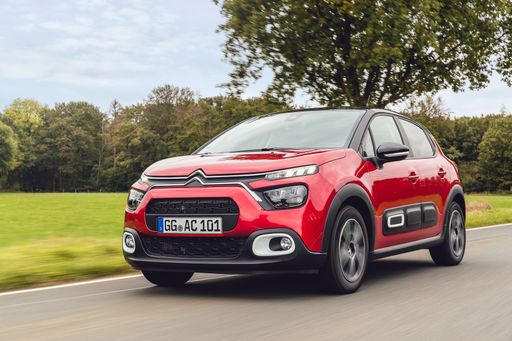 @ Citroën / Stellantis Media
@ Citroën / Stellantis Media
Citroen C3
Citroen C3
The Citroën C3 is a cheeky little city car that turns heads with its bold, quirky styling and a surprisingly comfy, well-thought-out interior. It’s an ideal companion for urban life — easy to park, friendly to drive and built to make everyday trips feel a bit more fun without breaking the bank.
details @ Citroën / Stellantis Media
@ Citroën / Stellantis Media
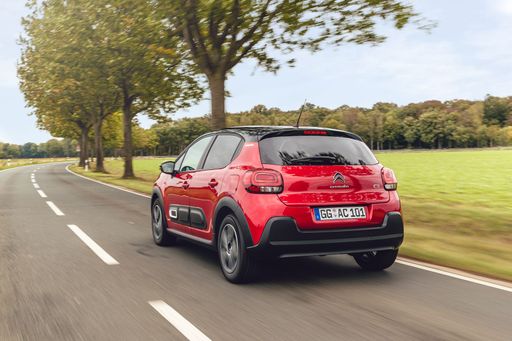 @ Citroën / Stellantis Media
@ Citroën / Stellantis Media
 @ Citroën / Stellantis Media
@ Citroën / Stellantis Media
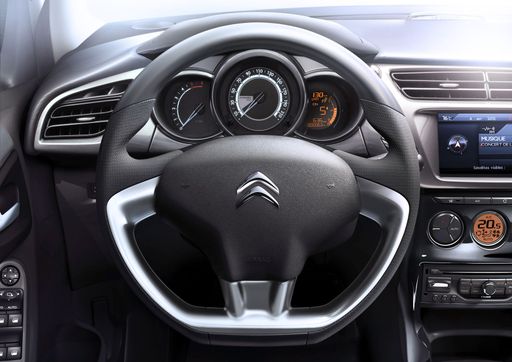 @ Citroën / Stellantis Media
@ Citroën / Stellantis Media
Hyundai i10
The Hyundai i10 is a cheeky city car that squeezes big-car confidence into a pocket-friendly package, carving through tight streets with surprising composure and sensible practicality. For buyers after low fuss, sensible equipment and wallet-friendly running costs, it's a smart, no-nonsense pick that makes sense whether you're a first-time driver or need a reliable second car.
details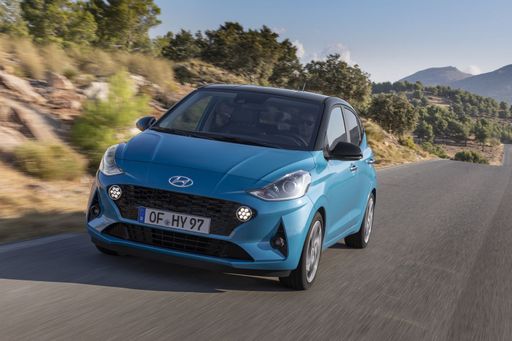 @ Hyundai Motor Company
@ Hyundai Motor Company
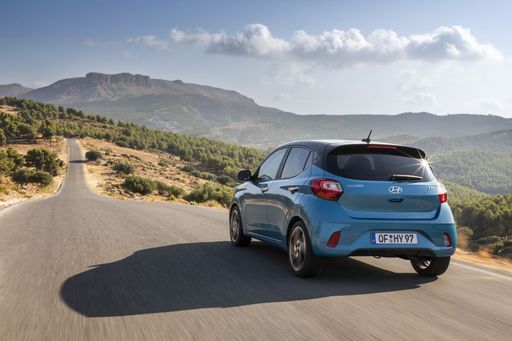 @ Hyundai Motor Company
@ Hyundai Motor Company
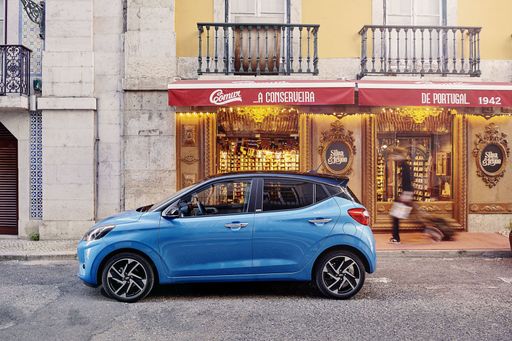 @ Hyundai Motor Company
@ Hyundai Motor Company
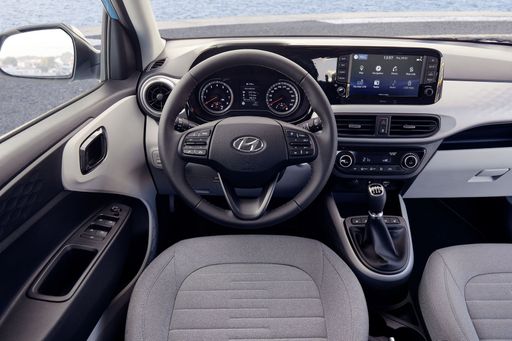 @ Hyundai Motor Company
@ Hyundai Motor Company
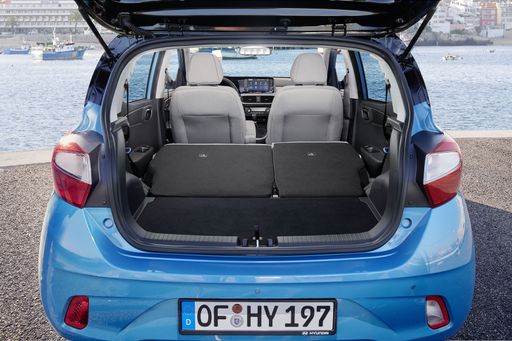 @ Hyundai Motor Company
@ Hyundai Motor Company
 @ Citroën / Stellantis Media
@ Citroën / Stellantis Media
|
 @ Hyundai Motor Company
@ Hyundai Motor Company
|
|
|
|
Costs and Consumption |
|
|---|---|
|
Price
13700 - 23800 £
|
Price
14600 - 19000 £
|
|
Consumption L/100km
5 - 5.6 L
|
Consumption L/100km
4.9 - 5.5 L
|
|
Consumption kWh/100km
16.6 - 17.2 kWh
|
Consumption kWh/100km
-
|
|
Electric Range
206 - 324 km
|
Electric Range
-
|
|
Battery Capacity
-
|
Battery Capacity
-
|
|
co2
0 - 126 g/km
|
co2
110 - 124 g/km
|
|
Fuel tank capacity
44 L
|
Fuel tank capacity
36 L
|
Dimensions and Body |
|
|---|---|
|
Body Type
SUV
|
Body Type
Hatchback
|
|
Seats
2 - 5
|
Seats
4 - 5
|
|
Doors
5
|
Doors
5
|
|
Curb weight
1226 - 1518 kg
|
Curb weight
996 - 1099 kg
|
|
Trunk capacity
310 L
|
Trunk capacity
252 L
|
|
Length
4015 mm
|
Length
3670 - 3675 mm
|
|
Width
1755 mm
|
Width
1680 mm
|
|
Height
1567 mm
|
Height
1480 - 1483 mm
|
|
Max trunk capacity
1220 L
|
Max trunk capacity
1050 L
|
|
Payload
227 - 423 kg
|
Payload
344 - 423 kg
|
Engine and Performance |
|
|---|---|
|
Engine Type
Petrol, Electric, Petrol MHEV
|
Engine Type
Petrol
|
|
Transmission
Manuel, Automatic
|
Transmission
Manuel, Automatic
|
|
Transmission Detail
Manual Gearbox, Reduction Gearbox, Dual-Clutch Automatic
|
Transmission Detail
Manual Gearbox, Automated Manual
|
|
Drive Type
Front-Wheel Drive
|
Drive Type
Front-Wheel Drive
|
|
Power HP
101 - 113 HP
|
Power HP
63 - 90 HP
|
|
Acceleration 0-100km/h
9.9 - 12 s
|
Acceleration 0-100km/h
11.4 - 18.4 s
|
|
Max Speed
125 - 183 km/h
|
Max Speed
143 - 175 km/h
|
|
Torque
120 - 205 Nm
|
Torque
93 - 172 Nm
|
|
Number of Cylinders
3
|
Number of Cylinders
3 - 4
|
|
Power kW
74 - 83 kW
|
Power kW
46 - 66 kW
|
|
Engine capacity
1199 cm3
|
Engine capacity
998 - 1197 cm3
|
General |
|
|---|---|
|
Model Year
2024 - 2025
|
Model Year
2024
|
|
CO2 Efficiency Class
D, A, C
|
CO2 Efficiency Class
C, D
|
|
Brand
Citroen
|
Brand
Hyundai
|
What drive types are available for the Citroen C3?
The Citroen C3 is offered with Front-Wheel Drive.
The prices and data displayed are estimates based on German list prices and may vary by country. This information is not legally binding.
